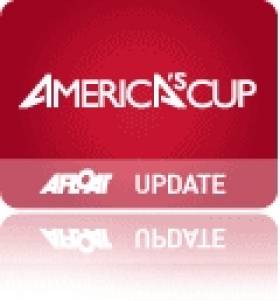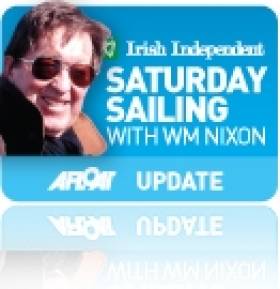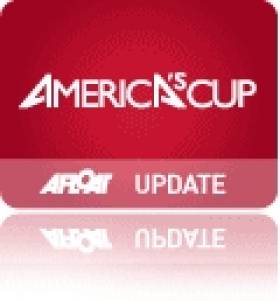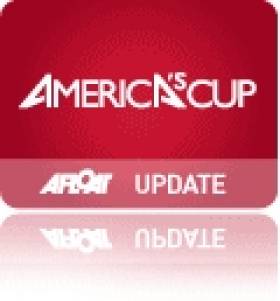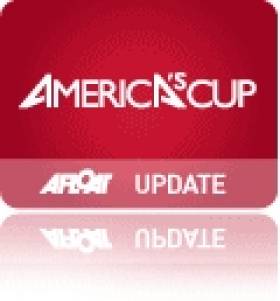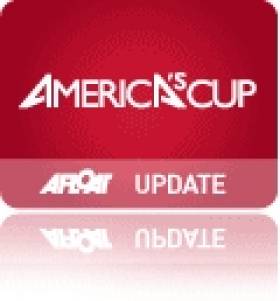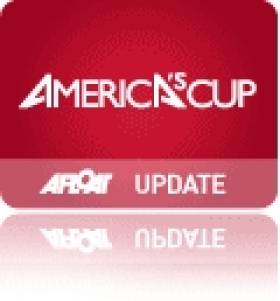Displaying items by tag: America's cup
Ben Ainslie Talks His Role In America's Cup Turnaround
#AmericasCup - Fresh off of helping comeback kids Oracle Team USA to the America's Cup in San Francisco last week, Britain's Olympic sailing superstar Sir Ben Ainslie gets the profile treatment in The Guardian this weekend.
Credited by many with the astonishing turnaround in Oracle's fortunes as they trailed Emirates Team NZ by one race win to eight in the first-to-nine contest, Ainslie is nonetheless discreet about the achievement, reminding interviewer Sam Wollaston: "There were 120 guys on the team and 11 of us on the water. It's certainly not about individuals. I'm not just trying to be modest."
'Sir Ben' feels he's matured over his long top-flight sailing career - dating back to his silver medal win in Atlanta in 1996 aged just 19 - and no longer turns "into a bit of a monster on the water".
And at least the Olympic gold medallist recognises what everybody else can see in him - that he's able to "produce the best performances under pressure, when things aren't going that well. I love the challenge, being on the back foot."
The Guardian has much more on the story HERE.
America's Cup Deserves the Nobel Peace Prize
#americascup – The America's Cup is still sailing's sacred monster. More so than ever, in fact. And it is still something of which we can honestly say: "This is the peak of world sailing – alas". But after the fantastic 34th America's Cup series in San Francisco, there's no denying it has us hooked.
How can we be so sure? There's a simple test. Anyone who took the slightest interest in it now asks: "What happens next?" Once you're getting that response from people, whether they are sailors or sports fans or simply good old Joe Public who just happened to catch it on a news flash, then you've got them hooked, and you can build on that for the future of the event.
So from being something which was only the highly specialised interest of an elite minority, it has become a supercharged happening from which everyone can take something. My own conversion came not from contemplating the seemingly endless intrigues which surrounded the event, and not from its extraordinary history of larger-than-life characters and even more off-the-wall boats, but simply from watching the vids of the giant catamarans racing, just like anyone else in an increasingly rapt global audience.
It's amazing to think that in a couple of years time and probably much sooner, we will take it for granted that a machine like Oracle USA can be powered up to sail to windward at 32.5 knots. And that done in a true wind of 17 knots. It meant that those on board were experiencing an apparent wind of upwards of Force 10.
And as for the way these 72ft boats rose on their foils, we may have had glimpses of it in the preliminaries, but when it is happening as a regular occurrence you begin to feel you're not looking at a boat at all, but at an utterly sensational magic carpet. Sailing became three dimensional as they shook off the grip of the sea. One can only reflect that the great G L Watson, who was the first designer to become obsessed about the need to reduce wetted area, would have been ecstatic.
And all this technical stuff is over and above the basic human interest, and the allocating of credit where credit is due. For sure, the introduction of Ben Ainslie as tactician into Jimmy Spithill's Oracle USA team made a significant difference. But it's pitching it a bit high to say that Sir Ben saved the America's Cup for Larry Ellison. Rather, he was a major component in a complex process of continuous improvement in every area, in a campaign which cleverly utilised every opportunity for scrounging extra time in order to maximise the boat's performance and thereby upset Team New Zealand's seemingly unassailable points lead.
Thus any sailor with an under-performing boat can take encouragement from the fact that when the finals began, the Kiwi boat was simply out-performing Oracle. But in the nail-biting final race, after endless round-the-clock work on the American boat, the reverse was true. Tactically, it was the New Zealanders who were on top of the game to establish an early advantage in that final race. But once they were fully into the beat, Oracle simply sailed round them and on into a solid lead.
That it's suggested that this turnaround is something which can be an inspiration to any sailor may seem far-fetched when we consider just how remote the America's Cup catamarans are from the kinds of boats and the sort of sailing the rest of us enjoy. But that is the measure of this series – there was something in it for everyone.
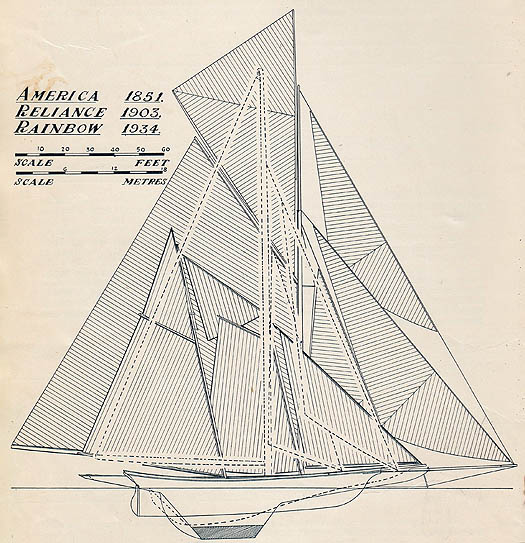
Three America's Cup winners, all to the same scale. Reliance of 1903 was the largest boat which has ever raced for the cup. At 143ft LOA, she was just one foot short of being twice the length of the current class of catamarans.
Not least of the impressions it leaves is the completely supra-national nature of it all. This genuine globalisation of sport is surely for the ultimate good of mankind. Officially it was New Zealand challenging America for an international trophy which originated in Britain 162 years ago. But what we might call the America's Cup community is now a supra-national grouping of hyper-talent drawn from many corners of the globe. Just which ensign goes up the winner's flagpole at the conclusion of the event depends on the nationality of whoever is signing the cheques. But the sailors themselves are patriots for their sport rather than the representatives of some narrow jingoist concept of nationality.
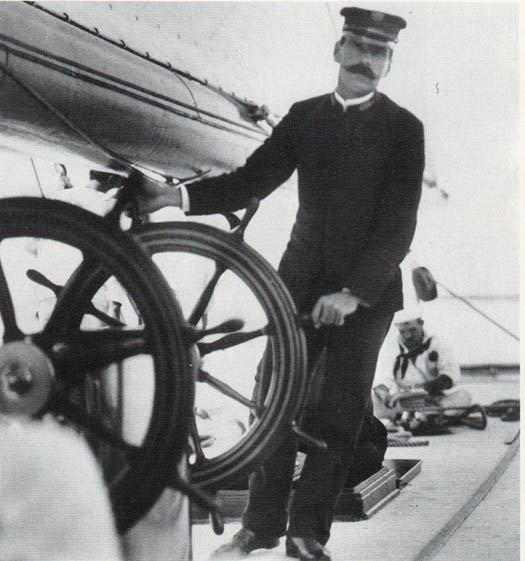
The main man. Charlie Barr on the helm of the giant Reliance, which had double wheels for extra power when needed. Barr was a Scotsman who became American as his sailing career reached the heights.
This is something which has long been central to the America's Cup, and it's all the better for it. After all, one of the greatest skippers in the history of the trophy was Charlie Barr, a Scotsman who settled in America after he had delivered a Clyde-built yacht across the Atlantic, and reached his full potential sailing American defenders of the cup.
More recently the Swiss involvement in the series emphasised just how meaningless traditional concepts of nationality can be. That said, we still do need some notion of nationhood in order to give us a better understanding of the human condition. The America's Cup's ability to transcend national feeling, while at the same time feeding a sense of national pride, is a remarkable achievement. It may seem a crazy idea, but why not consider it for the Nobel Peace Prize?
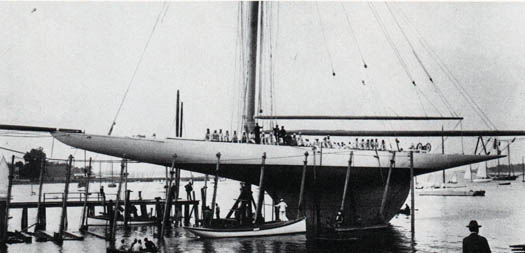
Launching day for Reliance, which carried a racing crew of 60......
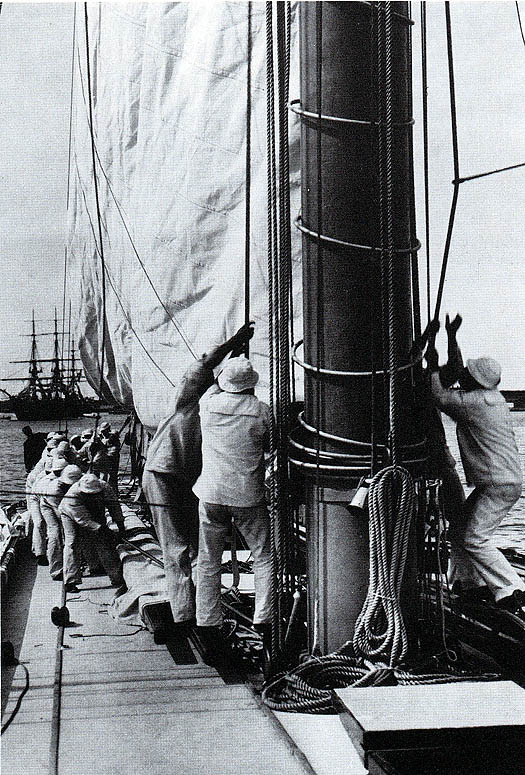
....and even with them all at work, hoisting Reliance's mainsail took quite some time. After defeating Thomas Lipton's Shamrock III by 3-0 in 1903, the Cornelius Vanderbilt-owned Reliance was dismantled, as her hull was built in so many different metals that it is said she hissed when put afloat.
As for its place in the global sailing community, it is currently very secure. We can't be certain that some future series will not draw the cup and our sport back into discredit, but for now we can be confident that the America' Cup has fulfilled all the hype, and then some. And by being something which is at a stratospheric height by comparison with almost all other forms of sailing, it now has the odd effect of making ordinary sailors feel more in community with the rest of the world. We reckon the America's Cup is just as crazy as everyone else does. But it certainly has got us hooked.
Comeback Kings Oracle Team USA Win America's Cup
ORACLE TEAM USA won the 34th America's Cup in a winner-take-all 19th race, defeating challenger Emirates Team New Zealand by 44 seconds in today's clincher. Led by 35-year-old skipper Jimmy Spithill, ORACLE TEAM USA won by the score of 9-8.
This is the second America's Cup win for ORACLE TEAM USA and Spithill, which won the 162-year-old trophy in Valencia, Spain, in February 2010. Then 30 years of age, Spithill became the youngest to ever skipper a Cup winning team.
In the past week ORACLE TEAM USA has steadily improved its boatspeed to the point where it could hydrofoil upwind at 30-32 knots, incredible performance never seen before in the America's Cup.
ORACLE TEAM USA's victory marks one of the most improbable comebacks in the history of sport. The team won 11 races to score the 9 points required for victory due to a penalty imposed by the International Jury. Just last Wednesday, Sept. 18, ORACLE TEAM USA trailed the series 8-1. With the challenger on match point, the defender closed out the series with eight consecutive victories.
This was the third time in the history of the America's Cup with a winner-take-all final race. Previously, the defender won in 1920 and the challenger won in 1983. Both times the winner rallied from a multi-race deficit, but never anything amounting to eight straight wins.
Race 19 Performance Data
- Course: 5 Legs/10.07 nautical miles
- Elapsed Time: OTUSA - 23:24, ETNZ - 24:08
- Delta: OTUSA +:44
- Total distance sailed: OTUSA - 11.9 NM, ETNZ - 12.2 NM
- Average Speed: OTUSA - 30.55 knots (35 mph), ETNZ - 30.55 knots (35 mph)
- Top Speed: OTUSA - 44.33 knots (51 mph), ETNZ - 45.72 knots (53 mph)
- Windspeed: Average - 18.2 knots, Peak - 21.3 knots
- Number of Tacks/Jibes: OTUSA - 9/7, ETNZ - 9/7
America's Cup - Who'll Blink First?
#americascup – San Francisco is in the process of serving up the greatest sailing spectacle of all time writes Anthony Shanks.
Will it be Oracle Team USA (OTUSA) to continue their unbeaten run into eight races or can Emirates team New Zealand (ETNZ) break the hoodoo and take the cup down south.
After race 5 Ben Ainslie was drafted in to replace John Kosteki, OTUSA then went on to loose the next two races leaving them 6-0 down with only one win they looked down and out. Of the next 11 races oracle have won 9 and team New Zealand have won 2.
The question has to be asked; what changed? Ben Ainslie was definitely an improvement and his gelling with Tom Slingsby and Jimmy Spithill has provided an amazingly strong after guard. Under immense pressure they have quite simply learned to sail the boat better.
ETNZ had shown the way, to everybody, working out how to hydrofoil these 72 foot monsters and had taken such made such a leap forward that everybody in the know assumed that it was not how but when would they all be competing in Auckland. When the series started it was as if the Americans had not been sailing, after their crash they admittedly lost three months of training time.
Then again everybody needs a bit of luck and two races cancelled firstly because of too much wind and then not enough both with ETNZ leading mut have made the kiwis wonder what was happening.
Oracle Team USA have used every minute available to them to make improvements to both their technique and their boat. The most notable must be their technique, just watching their tacking is one of the most spectacular sights as they roll from hull to hull reducing their wetted surface area as fast as possible. Then we get to the most wonderful sight of foiling up wind at 25+knots, this has to be the holy grail of multihull racing.
Oracle Team USA's performance has to have improved by in excess of 25 percent which in itself is remarkable over such a short period of time. In comparison ETNZ give the impression of standing still, which whilst not true is rather foreboding for this evenings race.
Jimmy Spithill is giving huge credit to the shore team, we all wonder what the enhancement to the boat have been. Have they put a different set of foils in? My take is that they have done something to the foils to get up a little earlier and seem more stable now than the kiwis.
San Francisco for the cup is probably the most predictable race course in the world to race on for this type of sailing, especially when the racing is corralled into such a tight area. With the wind and time limit the improvement only have to be made within quite a tight wind envelope, this has definitely played into OTUSA's hands.
Three days ago Dean Barker looked shell shocked, whilst in the same position 10 days ago Jimmy laconically talked about nothing to lose and just going out and racing.
The 34th America's Cup has become a psychological battle. Based on the last few races can you see past Oracle Team USA winning? Who do you think is going to blink first?
Oracle Team USA Draws Even for Thrilling America's Cup Climax
#americascup – Oracle Team USA has forced a winner-take-all final race for the 34th America's Cup after posting a come-from-behind win in Race 18.
Kiwi skipper Dean Barker started the race to leeward of rival Jimmy Spithill and held the lead around the first turning mark. The Kiwis kept the lead by 7 seconds at the leeward gate but Oracle Team USA has speed to burn on the upwind legs and simply sailed past the Kiwis. Oracle Team USA led by 57 seconds at the windward gate beginning the penultimate leg and finished with a 54-second advantage.
"It's not over. We've got to finish it off," said skipper Jimmy Spithill. "We've worked very, very hard to come back from where we were. And, the guys want it. You can sense it onboard and you can sense it around the base - the whole team just wants it. There's this huge wave of momentum we've been riding for the past few days and it just build and builds and builds, and we're going to carry that in to tomorrow."
Race 17 began with a double penalty off the line for Emirates Team New Zealand for not keeping clear as the windward boat. ORACLE TEAM USA was able to pull ahead and round the first mark 17 seconds in front. The team defended their position and held on to cross the line 27 seconds ahead of Team New Zealand.
Tomorrow's Race 19 is scheduled to start at 1:15 p.m. PT and the winner will win the 34th America's Cup.
Race 17 Performance Data
- Course: 5 Legs/10.11 nautical miles
- Elapsed Time: OTUSA - 24:04, ETNZ - 24:31
- Delta: OTUSA +:27
- Total distance sailed: OTUSA - 11.8 NM, ETNZ - 11.6 NM
- Average Speed: OTUSA - 29.62 knots (34 mph), ETNZ - 28.63 knots (33 mph)
- Top Speed: OTUSA - 44.02 knots (51 mph), ETNZ - 46.33 knots (53 mph)
- Windspeed: Average - 16.8 knots, Peak - 20.0 knots
- Number of Tacks/Jibes: OTUSA - 8/6, ETNZ - 7/5
Race 18 Performance Data
- Course: 5 Legs/10.11 nautical miles
- Elapsed Time: OTUSA - 22:01, ETNZ - 22:55
- Delta: OTUSA +:54
- Total distance sailed: OTUSA - 11.7 NM, ETNZ - 11.9 NM
- Average Speed: OTUSA - 31.92 knots (37 mph), ETNZ - 31.23 knots (36 mph)
- Top Speed: OTUSA - 45.79 knots (53 mph), ETNZ - 47.57 knots (55 mph)
- Windspeed: Average - 19.3 knots, Peak - 21.8 knots
- Number of Tacks/Jibes: OTUSA - 7/7, ETNZ - 10/6
Oracle Team USA Closes the Gauge To Extend 34th America's Cup Another Day
#americascup – Oracle Team USA won Race 15 by 37seconds over Emirates Team New Zealand to sweep the day after winning Race 14 by 23 seconds.
Oracle Team USA has clawed its way to 8-5 on the scoreline, after trailing by 8-1 on Wednesday. Emirates Team New Zealand needs one more win to win the America's Cup while Oracle Team USA has to win out, four more victories.
In a near carbon copy of Race 14, Oracle Team USA started Race 15 to leeward of Emirates Team New Zealand to lead by 3 seconds at the first turning mark. The defender stretched its lead to one minute at the second turning mark, before the Kiwis made inroads on the upwind leg. The Kiwis made another charge on the second downwind leg, but Oracle Team USA was too far ahead to overcome.
The deltas were 23s in race 14, 37s in race 15.
Barker said it was always going to be a difficult day with big variations in wind at the top and bottom of the course. It was patchy and there were a lot of shifts. Two starboard start-box entries didn't help."
Barker said Oracle sailed really well, managing the first downwind legs well, establishing good leads. "We gave them opportunities we should not have done. We fought back, got close at times, but it was Oracle's day."
Races 16 and 17 (if necessary) are scheduled for tomorrow at 1:15 and 2:15 pm PT.
34th America's Cup Standings (first to 9 points wins)
- Emirates Team New Zealand - 8 - Oracle Team USA - 5
America's Cup Race Postponed Again, Oracle Foil Kiwi Plans With Second Win
#americascup – Another one-race day at San Francisco as wind and tide conspired against the race committee's best endeavours to get the second race away.
They came close to succeeding. The boats were well into the two-minute start sequence when the plug was pulled for the third day in succession.
Emirates Team New Zealand started today one point away from taking the America's Cup to New Zealand.
The team ended the day in exactly the same position as it started it, but with a win in the one race sailed, Oracle put another point on the board.
The team lost race 12, the only race to be held today. Oracle gained another point and now trails New Zealand eight points to two. The first team to nine wins the America's Cup. Oracle won the start and led to the finish. The delta was 31s.
Standings (first to 9 points wins)
Emirates Team New Zealand - 8
Oracle Team USA - 2
America's Cup Resumes Today After Yesterday's Postponement for High Winds
#americascup – The wind won the day at San Francisco when Day 7 racing of 34th America's Cup was postponed until this morning. With an ebb tide of a strong 2.7 knots the wind limit at the start time was 20.3 knots.
The ebb tide flows against the wind direction and creates a challenging sea state for the AC72s.
The wind continued to build as it does at this time of the year in San Francisco and the race committee pulled the plug at 1.31pm when the wind strength was a consistent 25 knots.As the AC72 returned to base gusts of 32 knots were experienced.
On Wednesday wind conditions will start to moderate and so will the strangth of the tide.
Races 11 and 12 are rescheduled tfor today, at 1:15 pm and 2:15 pm San Francisco time.
Emirates Team New Zealand leads Oracle 7-1. The winner of the 34th America's Cup will be the first team to score nine points.
America's Cup Still Up For Grabs
#americascup – Today is a layday in the 34th America's Cup in San Francisco after a ferocious weekend of racing in which defenders USA racing the 75ft catamaran Oracle put in an astonishing Lazarus act to snatch more wins, with the pace being indicated by seven lead-changes in just one race. This prompted seasoned observer Gary Jobson to comment that there have already been more place changes in this series than in any since the cup became an international challenge series in 1870.
And there's more to come when racing resumes tomorrow. Grant Dalton's Emirates New Zealand team now lead by 7 point to 1, but defender USA's seemingly lowly score is distorted by the fact that they had to win two races before they could even begin to amass points - they'd incurred a severe rule infringement penalty set by the International Jury before this final challenge series started.
New Zealand need only two more wins to clinch the nine points for overall victory, so with eight wins required, the Oracle team still has a mountain to climb. Nevertheless their performance over the past two days shows that while it's still a slim hope, it's not impossible. That said, the Kiwi train is very much on the direct line, and they almost added another point yesterday. They were in the lead when racing was called off by the race officers as the wind had edged above the agreed maximum speed of 23 knots, set after the fatal accident to the Swedish challenger back in the Spring. Tensions are such that Kiwi commentators wondered if the race would have been so readily scrubbed if the Americans had been in the lead.........
It could all end tomorrow if there are two more Emirates New Zealand wins. But the programme has the potential to draw out the agony right through to Monday September 23rd if Jimmy Spithill and his Oracle USA team can continue to work miracles.
America's Cup – Sailing is Being Changed by These Phenomenal Machines
#americascup – As one of the biggest sceptics on the subject of the 34th Americas Cup and their use of 72–foot catamarans, I thought I would find it hard to admit that I might be wrong. After watching the racing in San Francisco on Sunday its not so difficult after all. The boats are not perfect, in fact if there is to be a second generation then there are a number improvements to the rule.
These would encompass proper movable elevators on the rudder and a general improvement of the adjustability of the control services. This would lead to a safer boat. Probably a slightly reduced wing size and some way of reducing the reliance on the hydraulics powered by the coffee grinders.
The most important people on the teams are the guys who work on the electronics and the hydraulics, as we have witnessed these systems are fragile.
But here is the kicker, sailing is being changed by these phenomenal machines, kids round the world are trying foils on all sorts of boats, and some of the experimenters are big kids... our sport is in need of a new infusion of enthusiasm and a new wave of thinking, I think these boats are it.
Until you have seen these boats for real you get very little concept of the speed, TV does not do them justice. San Francisco is the most incredible natural amphitheatre to witness these incredible machines and the equally superb teams.
Hopefully today we will witness more of the similarities of team Oracle and Team New Zealand.
Anthony Shanks (in San Francisco)


























